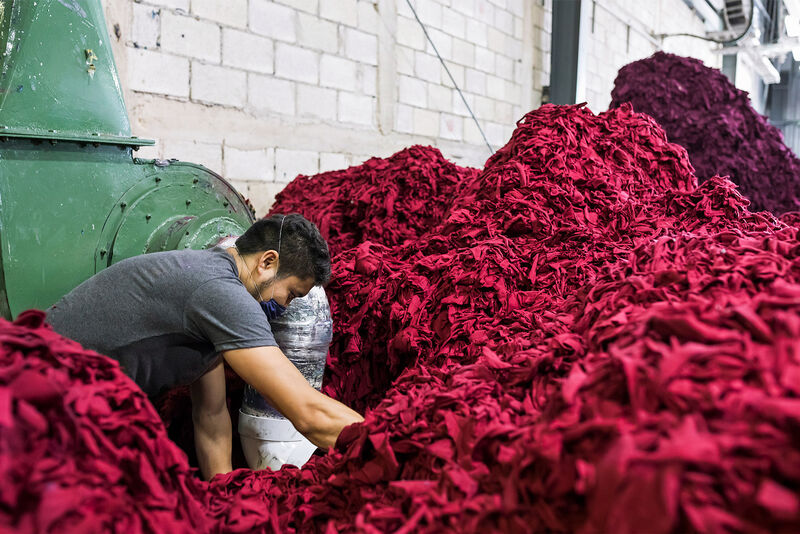Recycled Cotton
Our recycled cotton is made from pre-consumer cotton scraps gathered from factory floors and spinning mills as well as postconsumer waste that would otherwise end up in landfills.
Why
Producing a single pound of conventional cotton takes about 173 gallons of water. Add that to the carbon footprint of preparing the soil, the harmful pesticides that impact field workers, cultivating the plants and harvesting the crops, then scale up that number to encompass all the cotton grown in the world—and you get a significant environmental cost. By using recycled cotton, we extend the life span of a fiber that has already been created, uses fewer environmental resources and still has that soft, comfortable feel.
We’re making progress
The CO₂e emissions reduction, per kilogram of cotton fiber, we’ve achieved by using recycled cotton instead of conventional virgin cotton. (Higg Materials Sustainability Index, version 3.7)
Where We Are
Our supply-chain partners collect a variety of cotton waste products—some from postconsumer sources that would otherwise get landfilled and others from pre-consumer spinning-mill waste or sewing factory scraps—and use only the cotton that meets our quality standards. Then, the fibers are mechanically shredded, so they can be re-spun into new yarn. Most of our recycled cotton is blended with recycled polyester. This process extends the length of the fibers to make the perfect yarn for sweatshirts and T-shirts.
For the Spring 2025 season, 28% of our cotton fabrics by weight are made with recycled cotton. Using recycled cotton fiber reduces CO₂e emissions by 82% per kilogram compared to using conventional virgin cotton fiber, based on the Higg Materials Sustainability Index, version 3.7.
What’s Next
Patagonia is focusing on four types of cotton: organic cotton, recycled cotton, Cotton in Conversion (cotton from farmers who are transitioning their crops from conventional to organic cotton) and Regenerative Organic Certified® Cotton.
Our goal is to incorporate recycled cotton into our raw materials whenever possible. We are constantly working with new supply-chain partners and vetting new technologies that will allow us to use more recycled cotton.

